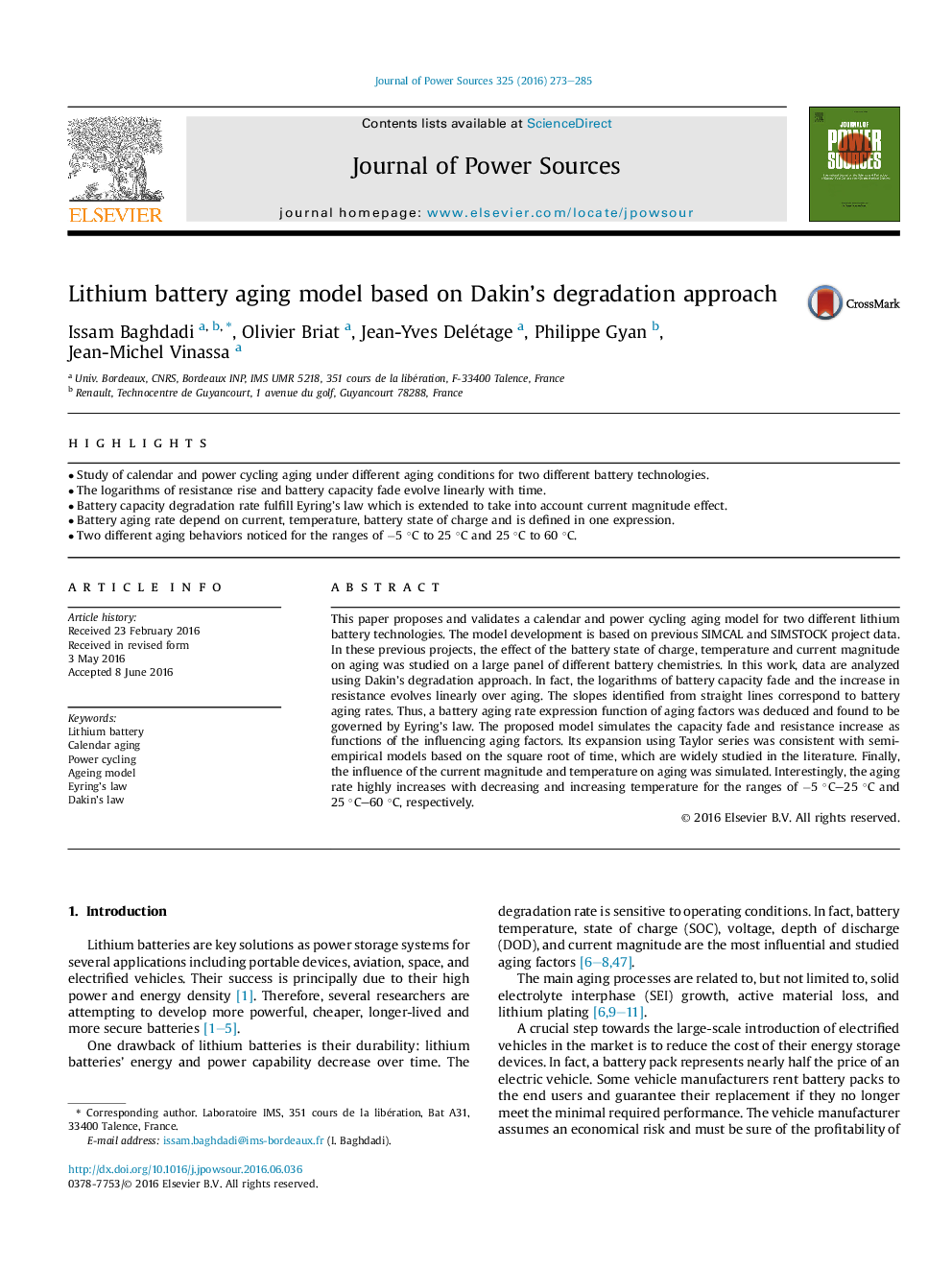| Article ID | Journal | Published Year | Pages | File Type |
|---|---|---|---|---|
| 7727426 | Journal of Power Sources | 2016 | 13 Pages |
Abstract
This paper proposes and validates a calendar and power cycling aging model for two different lithium battery technologies. The model development is based on previous SIMCAL and SIMSTOCK project data. In these previous projects, the effect of the battery state of charge, temperature and current magnitude on aging was studied on a large panel of different battery chemistries. In this work, data are analyzed using Dakin's degradation approach. In fact, the logarithms of battery capacity fade and the increase in resistance evolves linearly over aging. The slopes identified from straight lines correspond to battery aging rates. Thus, a battery aging rate expression function of aging factors was deduced and found to be governed by Eyring's law. The proposed model simulates the capacity fade and resistance increase as functions of the influencing aging factors. Its expansion using Taylor series was consistent with semi-empirical models based on the square root of time, which are widely studied in the literature. Finally, the influence of the current magnitude and temperature on aging was simulated. Interestingly, the aging rate highly increases with decreasing and increasing temperature for the ranges of â5 °C-25 °C and 25 °C-60 °C, respectively.
Related Topics
Physical Sciences and Engineering
Chemistry
Electrochemistry
Authors
Issam Baghdadi, Olivier Briat, Jean-Yves Delétage, Philippe Gyan, Jean-Michel Vinassa,
